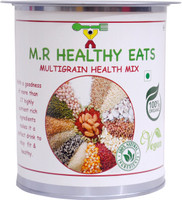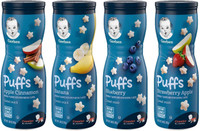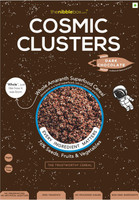Steel vs Wooden Chopping Boards: Pros, Cons, And The Best Choice For Your Kitchen
Every kitchen has its unsung hero: the chopping board. But when it comes to picking between steel and wooden chopping boards, the choice is trickier than expected. This is a deep dive into the debate that touches hygiene, durability and cost.
Steel vs Wooden Chopping Boards: Find Out Which One Really Belongs in Your Kitchen
The pressure cooker whistles in the background, the aroma of masala fills the air, and you reach out for your chopping board. It seems like a small decision, doesn't it? Yet, the board you use can shape your cooking experience more than you realise. Wooden chopping boards have long been the traditional favourite. They carry a rustic charm, a sense of warmth, and a familiarity reminiscent of old kitchens with big wooden counters. On the other hand, sleek steel chopping boards have entered modern kitchens with a promise of hygiene, durability, and a certain contemporary flair.
But which one should earn that prime spot on your countertop? Steel chopping boards are ultra-durable and hygienic; wooden boards protect knife blades, but require care; ultimately, the best kitchen choice depends on priorities and personal style. Let's slice into the debate at length.

Every kitchen has its unsung hero: the chopping board. But when it comes to picking between steel and wooden chopping boards, the choice is trickier than expected.
Photo Credit: Pexels
The Great Kitchen Showdown: Steel vs Wooden Boards Across 10 Angles
1. Durability: Built to Last or Wear with Time?
Steel chopping boards are almost indestructible. Drop them, bash them, or let them bear the brunt of a heavy cleaver, they'll barely flinch. Wooden boards, in contrast, show their age. With every chop, they develop nicks and grooves, which may deepen over time. Some home cooks adore these marks, calling them the board's “character lines”, much like laugh lines on a face. Others find them a nuisance because they trap food particles.
In bustling households where cooking is a daily affair, think of the endless chopping of bhindi, lauki, and papaya, durability becomes a priority. Steel wins here, but not without trade-offs. Unlike wood, it doesn't absorb shocks. Your knife feels the full force, and that can shorten blade life. So yes, steel survives longer, but your knives may need sharpening more often.
2. Hygiene Factor: Germ-Free or Germ Magnet?
One of the loudest arguments for steel chopping boards is hygiene. Steel doesn't absorb water or juices, making it harder for bacteria to multiply. After cutting raw chicken or fish, you can rinse it off, and voilà, it's as good as new. For households wary of foodborne illnesses, this feels like a safety net.
Wooden boards, however, tell a different story. Their porous nature means liquids can seep in, and if not cleaned thoroughly, they may harbour bacteria. That said, studies suggest that natural wood fibres have antibacterial properties of their own. It's a bit of a mystery, but wood sometimes outsmarts germs by pulling moisture away from the surface. Still, in a country where humidity is high and kitchens can be warm, a neglected wooden board may end up smelling less than pleasant.
3. Knife Friendliness: Smooth Cuts vs Blunt Blades
For anyone who treasures their knives, the chopping board is not just a surface, it's a partner in crime. Wooden boards cushion the blow of each chop, protecting blades from premature dullness. They're gentle and forgiving, even when you're chopping through mountains of onions for biryani.
Steel boards, however, are less considerate. The surface is hard, unyielding, and relentless. Over time, knives tend to lose their sharp edge faster. Considering how much pride many home cooks take in their knives, whether it's a fancy chef's knife or the humble but sharp desi boti knife, this becomes a dealbreaker. A blunt knife is not only frustrating but also unsafe. It forces you to press harder, raising the risk of slips and cuts.

10 things to know about Important things to know about steel vs wooden chopping boards.
Photo Credit: Pexels
4. Aesthetic Appeal: Rustic Charm vs Sleek Modernity
Walk into a kitchen and a chopping board often makes a quiet statement. Wooden boards bring warmth and a rustic vibe. They look beautiful propped against a backsplash or laid out on a counter, doubling up as serving platters for cheese, fruits, or kebabs. Their aesthetic charm cannot be denied.
Steel boards, in contrast, scream modern. They fit right into minimalist, contemporary kitchens with shiny appliances and monochrome counters. They don't age with patina like wood but keep their glossy, industrial appearance. The choice here is more about personality than practicality. Do you want your kitchen to look homely or high-tech?
5. Maintenance: Quick Rinse or Care Ritual?
Steel boards are champions of low maintenance. Spill curry, slice raw fish, or even chop turmeric (yes, the stain monster!), a quick wash gets rid of everything. They don't stain, absorb odours, or demand much effort.
Wooden boards, on the other hand, are like that high-maintenance friend. They need drying after every wash, regular oiling to prevent cracks, and gentle cleaning to avoid warping. Forget to care for them, and they may split or smell. However, those who enjoy the ritual of maintaining their kitchen tools may actually find this satisfying. After all, a seasoned wooden board often feels like part of the family.
Also Read: Cut Better, Cook Faster With Top Chopping Boards Under 500 For Every Kitchen
6. Noise Levels: Gentle Thuds vs Loud Clangs
Cooking isn't just about taste; it's also about the soundscape of your kitchen. Wooden boards produce a muted, rhythmic thud that blends seamlessly with the hiss of a tadka or the whistle of a cooker. Steel boards, however, tend to clang. The sound of a knife striking steel can feel harsh, almost jarring.
For homes where the kitchen is a central hub, where conversations, chai breaks, and homework happen around cooking, the softer sound of wood keeps the atmosphere warm and welcoming. Steel might be better suited for professional kitchens where noise doesn't matter as much as speed and efficiency.

Wooden boards offer a peaceful sound while chopping ingredients
Photo Credit: Pexels
7. Safety: Slips and Grips
One underrated aspect of chopping boards is how stable they feel under the knife. Wooden boards usually grip countertops well. They're less likely to slip when you're going at garlic or ginger with force.
Steel boards, being smoother, can skid if not placed on a stable surface. Many come with rubber feet or textured bases to solve this, but not all. A slipping board can be dangerous, especially when working with sharp knives. If safety is high on the checklist, wood edges ahead here.
8. Cost Factor: Affordable vs Investment
Here's where practicality comes in. A sturdy wooden chopping board can cost anywhere from ₹500 to ₹2,000 depending on size and quality. Steel chopping boards, being newer in the market, often come at a premium, ₹1,500 upwards for decent models.
For large families or those setting up kitchens on a budget, wooden boards offer a practical option. They're available everywhere, from roadside utensil stalls to high-end kitchen stores. Steel boards, while long-lasting, may feel like an investment. If budget is tight, wood has the upper hand.
9. Eco-Friendliness: Natural vs Manufactured
Wooden boards, if sourced responsibly, are environmentally friendly. They're biodegradable, renewable, and often made from sustainable wood. There's something reassuring about knowing your kitchen tool has a natural origin.
Steel boards, while recyclable, require heavy manufacturing processes. They last longer, yes, but their production carries a larger carbon footprint. For environmentally conscious households, wood feels like the greener option, provided it's cared for and not replaced too often.

Wooden chopping boards can be more eco-friendly than stainless steel ones
Photo Credit: Pexels
10. Versatility: From Kitchen Tool to Serving Board
Wooden chopping boards often double as serving platters. Imagine placing hot pakoras or a neatly arranged sandwich spread on a wooden board during tea time, it adds charm without trying too hard. They can also serve as kneading boards for dough, making them versatile in function.
Steel boards rarely step out of their “utility” role. They're purely functional and lack the serving appeal. But they can take on heavier tasks, from tenderising meat with a hammer to chopping through bones without denting. It all comes down to whether you value versatility or sheer utility.
Products Related To This Article
1. Clazkit Stainless Steel Chopping Board Vegetable
2. Clazkit Counter Top Stainless Steel Chopping Cutting Board Vegetable
3. AADHIK Chopping Board Stainless Steel Medium Size Metal Cutting Kitchen
4. Kraft Stainless Steel Chopping Board
5. JD FRESH Extra Large 304 Stainless Steel Chopping Board
6. Darkpyro Stainless Steel Chopping Board
7. Kraft Stainless Steel Chopping Board for Kitchen
Choosing between steel and wooden chopping boards is like picking between tradition and modernity. Wooden boards bring warmth, knife-friendliness, and a homely charm, but they demand care and have hygiene concerns. Steel boards shine with durability, hygiene, and easy maintenance, but they're tough on knives, noisy, and often pricey.
There's no one-size-fits-all answer. A home cook who values aesthetics, quiet chopping, and versatility may lean towards wood. Someone prioritising hygiene, durability, and low maintenance may prefer steel.
Perhaps the wisest option is balance, keep both. A sturdy steel board for raw meats and fish, and a wooden board for vegetables, fruits, and serving. That way, you get the best of both worlds, minus the constant debate. After all, the chopping board should make life easier, not harder. And in a kitchen already buzzing with flavours, laughter, and the occasional chaos, a little balance goes a long way. Shop chopping boards online and make your kitchen more hygienic and mess-free.
Disclaimer: The images used in this article are for illustration purpose only. They may not be an exact representation of the products, categories and brands listed in this article.













![Steam Iron Teflon Shoe Cover for ES-300,ST-96 [Only For ES-300 and ST-96 Model Electric Steam Irons]](https://m.media-amazon.com/images/I/51wwkttondL._SL160_.jpg)